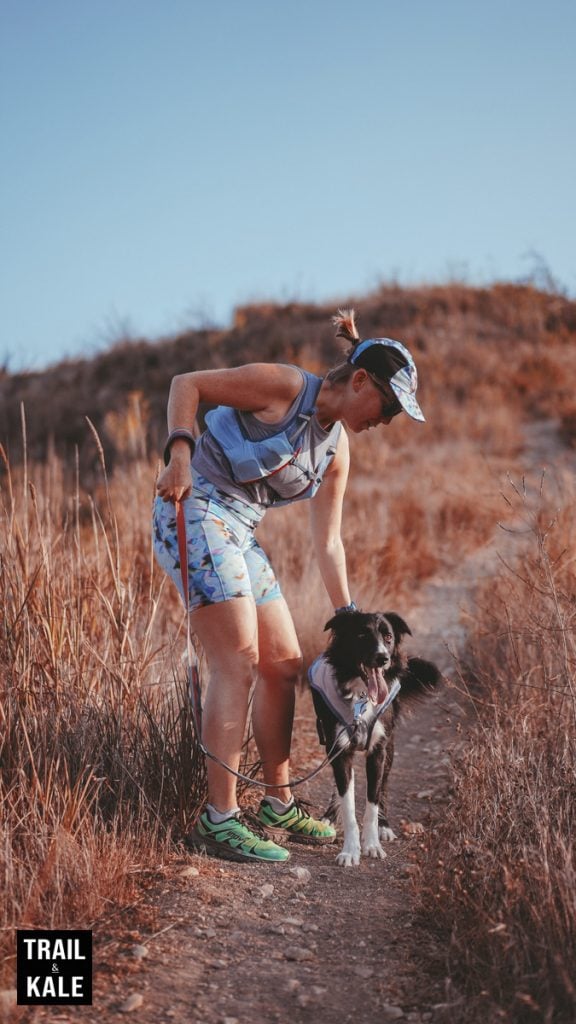As you likely already know, the sport of running is full of jargon – whether it’s fartlek training, tempo runs or interval training sessions, it can take some time to familiarize yourself with what these terms mean (our Running 101 guide will help with that, though!).
Cross training for runners is another area that’s not often well understood, but it’s actually a very simple concept that all runners should incorporate into their weekly training schedule, as I explain in this post.
This is especially true for beginner runners and those training for a long endurance race such as a half marathon, full marathon or stepping up further to ultramarathon training.
As well as explaining what cross training is (and isn’t), in this post I cover:
- the benefits of cross-training exercises for runners
- why strength training is a key workout for any runner’s cross-training schedule
- a list of the best cross-training exercises and activities for runners
- 3 of the best cross-training workouts for runners (my personal favorites)
- FAQ about cross-training for runners
What is cross training?
Put simply, cross-training is any fitness activity that will complement your running training and give you strength and endurance benefits.
Popular forms of cross-training that are highly relevant to running because they provide a cardio workout and use similar muscle groups include cycling (whether indoors or outside, such as road or mountain biking) and using an elliptical in the gym.
Equally, strength training is an important form of cross-training that, if done correctly with the right movements, can make a huge difference to runners in terms of the strength, muscular endurance and injury prevention benefits this activity has to offer.
My personal favorite cross training exercises for runners are:
- Strength training – including lunges, squats and core exercises that are highly relevant to running due to the way they work your leg and glute muscles
- Swimming – the best low-impact cardio exercise for injured runners or anyone wanting to give their legs a rest from weight-bearing activity
- Cycling – either indoors, on my Peloton bike (the trainers make the time fly and you know you’re getting a good cardio workout) or outside mountain biking where you can learn new trails, work on balance and strength while enjoying fresh air and a tough cardio cross-training workout
- Hiking – hiking is a great alternative to running for trail runners who want to hit the trails but don’t have the energy levels for tackling a trail run with lots of elevation gain and loss.
These four types of workout are highly relevant to running and can help to make you a better runner.
Later in this post I list some other cross-training activities you may also consider, that are all good for runners.

What are the benefits of cross-training for runners?
Cross-training activities are great for runners because they allow you to work a range of muscle groups and work on your aerobic fitness to help you improve your strength and endurance, while reducing your risk of running-specific overuse injuries.
Here are the 4 key benefits:
1. Strength and endurance gains
You can work on your fitness and strength without actually running or putting your body through the impact of running.
Relevant cross-training workouts (which I’ll give examples of later in this post) will help you improve your running-related fitness in areas such as:
- More efficient running form and cadence
- Increased VO2 max capacity
- Explosive power
- Flexibility
- Correcting muscular weaknesses and imbalances (such as when you have one leg or side of your body that’s stronger than the other).
2. Provides variety in your training
The best forms of cross-training for runners are those exercises that complement running but are low impact, so they give your body a break from running.
This is especially important for new runners who need to work on their strength and conditioning before increasing their running distance or weekly mileage to reduce their risk of injury.
Equally, experienced endurance runners like to incorporate cross-training into their loaded weekly running schedules to provide both mental and physical variety in to their training.
3. Reduces injury risk
Cross training can help reduce your injury risk in two ways.
Avoid running ‘too much’ which can lead to overuse injuries
Firstly, by choosing to spend 30-45 minutes cross-training rather than fitting in an extra run in your week, you may be reducing your chance of picking up a running overuse injury.
This is because while you’re giving your body a break from the impact of running, you’re still working on improving your strength and cardio fitness.
Work on injury-proofing
Secondly, cross-training allows runners to work on areas of weakness to ‘injury-proof’ their muscles, tendons and ligaments.
This could look like doing an injury-prevention strength training session involving legs and core, which in turn helps your glutes, hamstrings and core muscles become stronger, enabling you to maintain good running form for longer on your next long, challenging run.
Injury-proofing could also mean working on specific physical therapy exercises (that your PT may have given you if you’ve seen one) to correct any known muscular imbalances, such as where one leg is stronger than the other (perhaps because the other was injured in the past).

It can help with recovery
Light cross-training activities like cycling, hiking or swimming can help your body recover after a race or intense training run, without the impact of running, so it’s a good option when you would otherwise do a recovery run but want to avoid running for a day.
Light cardio activity like this can help increase blood flow to your muscles, and reduce lactic acid build up.
In turn, this can reduce the intensity or occurrence of the dreaded post-workout DOMs (delayed onset muscle syndrome) where your muscles are very sore a couple of days after an intense workout.
4. Relevant training for injured runners
Effective cross-training workouts are one of the best ways for injured runners to continue to maintain and improve their strength and fitness without running.
By doing aerobic cross-training activities where you’re mainly moving in one plane of motion, like running, you can work to become a better runner without actually running!
The most relevant activities for injured runners are typically cycling and the elliptical.
Depending on the nature and severity of your injury, you may also want to consider activities like swimming and aqua jogging, which are even lower impact and don’t involve putting weight on your lower legs.
Additionally, by taking the opportunity to do some running-specific strength training while you’re unable to run, you may find yourself becoming a stronger, more well-rounded athlete by the time you are able to get back to actually running.
So while many runners may initially struggle at the thought of NOT doing a running workout, and opting for cross-training exercises instead, this could be a quicker path to making you a better runner than simply choosing to run each time you have the opportunity to do some exercise.
Is strength training the same as cross training?
Yes, strength training is a type of cross-training.
While strength-focused cross training workouts do not offer a similar level of aerobic workout as running or other more intensive cardio activities, strength training is an important activity to incorporate into your run training program, whether you’re a beginner or advanced runner.

Strength training doesn’t have to mean weightlifting. I consider appropriate strength training for runners to be any resistance training exercise that benefits you as a runner.
So that includes a lot of core strength, stability and bodyweight exercises such as squats and lunges, that work those large muscles in your legs, core and glutes.
The best cross-training exercises and activities for runners
The great thing about cross-training is you can choose what each cross training session looks like.
If you have a strong preference for particular types of cross training activities, then you can choose to do them.
Here are my top recommended activities to choose from when planning to incorporate cross-training into your running training.
- Hiking
- Cycling (either indoor on a static bike, or outside on the roads or mountain bike trails)
- Swimming
- Aqua-jogging
- Elliptical (or an Ellipti-Go)
- Strength training
- Yoga and/or pilates
Yoga is, by the way, a fantastic activity for runners to do as a course of habit. It not only helps you work on your overall strength, balance and flexibility, but it’s a great opportunity to practice focus, mindfulness and work on your breathing patterns.
Effective breathwork is good for runners to work on because it can help you learn to breathe properly while running.
Swimming is another cross-training activity that I personally find extremely helpful for working on developing efficient breathing patterns, which in turn, helps me breath effectively when I’m running.
How do you include cross-training in your running training plan… and how many days a week should you cross-train?
Many run training plans (such as our popular marathon training plans and half marathon training plans) have designated cross-training days planned in.
How many times per week you choose to cross-train depends on your running goals, current fitness level, and time you’re able to spend on training.
If you’re running every other day, then it’s typically for many runners to pick 1-3 of the non-running days each week to do some cross-training.
This could look include:
- 1x strength training day
- 1x cardio day (such as static cycling or swimming)
- 1x yoga session (which could also be done on a run-day – yoga can be great to do after a run!).
If you are currently unable to run often (or at all) due to an injury, you may want to use cross-training instead of running by doing non-running workouts such as swimming or pool running on the days you’d normally run.
3 of the best cross-training workouts for runners
Strength training routine for runners
Trail & Kale co-founder Alastair filmed this tough at-home bodyweight strength and core conditioning routine for runners. Give it a go if you’re up for it (but look out for those brutal burpees!!).
Visit our YouTube Channel for loads of tips and gear reviews (including tons of high-end running shoe reviews).
10 easy yoga stretches for runners
These are our favorite yoga stretches to do as runners. A good stretch routine helps runners work on maintaining and even improving flexibility.
Static cycling intervals
Here’s a simple workout you can do on an indoor static bike.
- Warm up – 5 minutes
- Resistance intervals – turn resistance up to heavy (but manageable), get out of the saddle and push for 1 minute, then recover for 1 minute. Repeat x 8 times.
- Cool down – 5 minutes
This ride can easily be extended by taking a 2-3 minute easy cycling break after the intervals, and then repeating the interval block – either with more resistance intervals, or instead, staying seated and doing speed (high cadence) intervals for 1 minute on, 1 minute off, instead (x8).
Get off the bike and spend a good 5-10 minutes stretching. The post-run stretches in our ‘best stretches for runners‘ post are also great to do after a static cycle session.
FAQ about cross training for runners
Ok, so how does cross-training prevent injuries?
As detailed above, by choosing a cross-training session instead of a run, you’re reducing your risk of running overuse injury.
Additionally, the best cross-training exercises for runners will help you work on injury-proofing yourself to reduce weakness and imbalances which can make you more prone to picking up an injury.
Is CrossFit the same as cross-training?
Not really.
While both CrossFit and cross-training involve incorporating a variety of exercises and activities into a training program, there are significant differences between the two.
CrossFit is a specific type of high-intensity workout program that incorporates a range of exercises and activities, including weightlifting, gymnastics, and cardio.
CrossFit workouts typically involve performing a series of exercises or movements in a circuit or time-based format with the goal of improving overall fitness and strength.
While both CrossFit and cross-training can be beneficial for improving fitness and performance, they differ in their focus and approach. Cross-training is generally used to complement a primary sport, while CrossFit is a complete workout program that can be done on its own.






